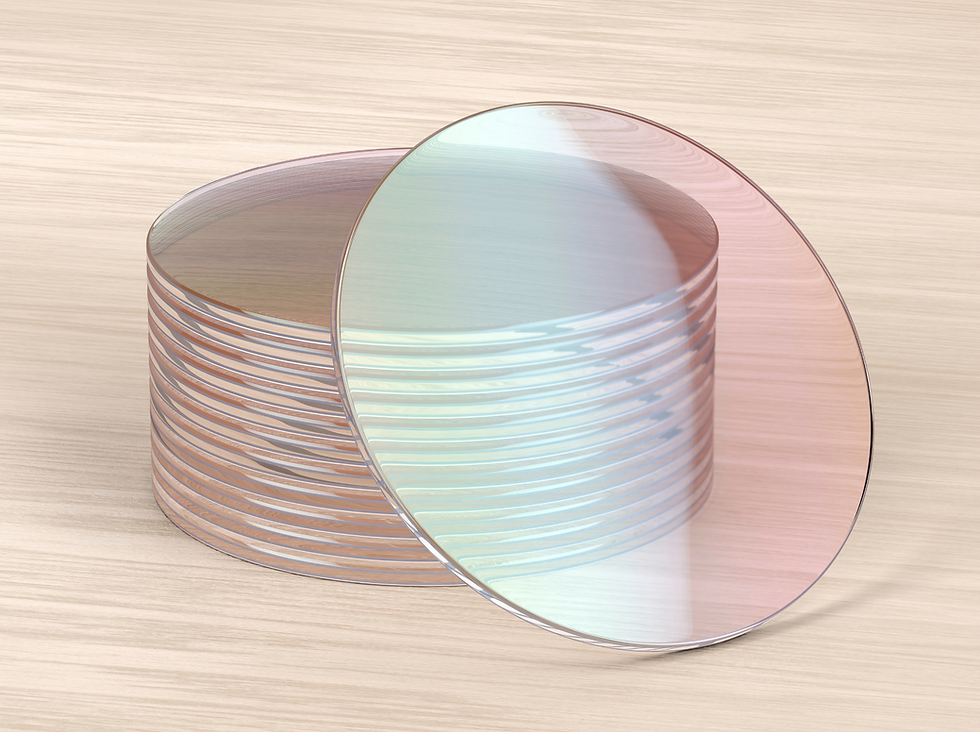Eye Damage from Solar Eclipse
- Atanas Bogoev M.D. and Maria Bogoeva

- Sep 17, 2023
- 4 min read
Updated: Sep 20, 2023
A solar eclipse is a captivating natural phenomenon where the moon passes between the Earth and the sun. Thus casting a shadow on the Earth's surface and blocking the sun's light partially or completely. While these celestial events are awe-inspiring, they may also result in eye damage from solar eclipse.
In this publication, we strive to educate patients about solar eclipse eye damage risks. We also aim to provide essential information on how to safeguard your eyes while enjoying the scenic wonder.
On October 14, 2023, an annular solar eclipse will cross North, Central, and South America. Prepare yourself by following our tips!
Understanding Solar Eclipse Eye Damage
Looking directly at the sun, whether during a solar eclipse or not, often causes severe eye problems due to the intense light emitted by the sun. That's because our eyes are not capable of handling the brightness. Exposing them to it may potentially result in irreversible harm.
During a solar eclipse, the moon partially covers the sun, creating a phenomenon where the remaining visible part of the sun seems less intense, leading some to believe it is safe to look at directly. However, this misconception can result in lasting eye damage from solar eclipse.

Risks of Eye Damage from Solar Eclipse
Staring at the sun during a solar eclipse can result in solar retinopathy. A condition where the light-sensitive cells in the retina degenerate. The retina is crucial for vision. Any damage to it intensifies the chances of permanent vision impairment.
Solar retinopathy may cause symptoms like:
Blurred vision
Distortion
Central blind spot
In severe cases, eye damage from solar eclipse is likely to result in legal blindness.
RELATED: Leading Causes of Blindness
Can You Look at a Solar Eclipse Directly?
No. One should never look at a solar eclipse directly. Even if it appears less intense due to the moon's covering.
The ultraviolet (UV) and infrared (IR) sun rays could induce immediate damage to the delicate structures of your eyes. Remember, the eye's natural defenses, like blinking and pupil contraction, are insufficient to protect against these harmful rays during a solar eclipse occurrence.
How to Protect Your Eyes during a Solar Eclipse?
During a solar eclipse, it is vital to prepare yourself in advance. Not only to witness this awe-inspiring phenomenon but also to safeguard your eyesight. Accordingly, it is imperative to understand the proper measures for eye protection.
In this section, we delve into the essential guidelines to ensure your eyes remain safe and healthy while experiencing the wonders of a solar eclipse:
Use Proper Eye Protection
The safest way to view a solar eclipse is by wearing eclipse glasses.

These glasses are specifically designed for the purpose of preventing solar eclipse eye damage. They have special filters blocking harmful UV and IR rays, allowing you to view the celestial spectacle safely.
Ensure your eclipse glasses are ISO 12312-2 compliant for proper protection.
The ISO 12312-2 standard is an international benchmark for solar viewer safety. Eclipse glasses carrying this compliance have undergone rigorous testing, affirming their ability to provide adequate protection against the sun's radiant force.
RELATED: Common Myths About Eyes
Pinhole Projection
An alternative eye-safe method to view a solar eclipse is pinhole projection.

Pinhole Projection. Image Credit: NASA
Create a small hole in a piece of cardboard and let the sunlight pass through the hole, projecting an image of the partially eclipsed sun onto another surface. This indirect viewing method is safe and suitable for those without eclipse glasses.
Solar Filters for Telescopes and Binoculars
Never look through regular telescopes or binoculars at the sun, even during an eclipse, without proper solar filters. Solar filters for optical devices are different from eclipse glasses and are necessary to prevent any potential eye damage from solar eclipse.
Always opt for filters, specifically designed for solar observation.

Selecting an appropriate solar filter is key to ensuring the eyes' safety and the viewing experience quality. The most common types of solar filters are:
Full-Aperture Filters that cover the entire aperture of the telescope or binoculars;
Objective Filters that are placed over the front objective lens of binoculars or telescopes;
Eyepiece Filters that belong over the eyepiece for telescopes with interchangeable eyepieces.
Reputable astronomy equipment retailers and organizations can guide you toward filters that adhere to safety standards.
Live Broadcasts
In the age of technology, everyone can experience the breathtaking spectacle from the comfort of their own home.
Live broadcasts on TV or online platforms are a convenient and risk-free alternative for those worrying about the potential risks of directly viewing a solar eclipse. Many reputable sources provide high-quality, safe-to-watch coverage of the event.
Here are some of the advantages of live broadcasts:
Eliminating risks of eye damage from solar eclipse
Expert commentary by astronomers and scientists
Exceptional views from high-altitude observatories and space-based telescopes
Some live broadcasts incorporate interactive elements
Global coverage
Space agencies and astronomical organizations offer the best solar eclipse live broadcasts to view.
Conclusion
While a solar eclipse is an awe-inspiring event, the risks of eye damage are real and potentially severe.
We urge you to prioritize your eye health by following safe viewing practices. Never look directly at the sun without proper eye protection. Remember that eyesight is irreplaceable, so taking precautions to safeguard them during a solar eclipse is fundamental to your vision.
Read more about eye health and eye care in our ophthalmology blog.
Resources:
Solar Eclipse Safety, NASA
Solar Eclipse Eye Safety, American Academy of Ophthalmology
Checked by Atanas Bogoev, MD.







